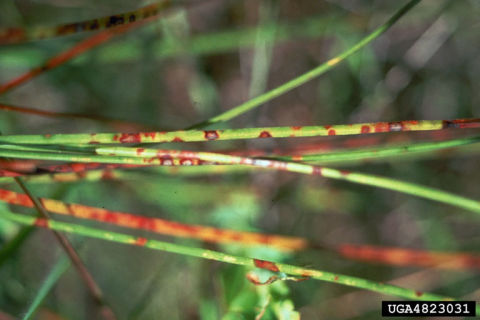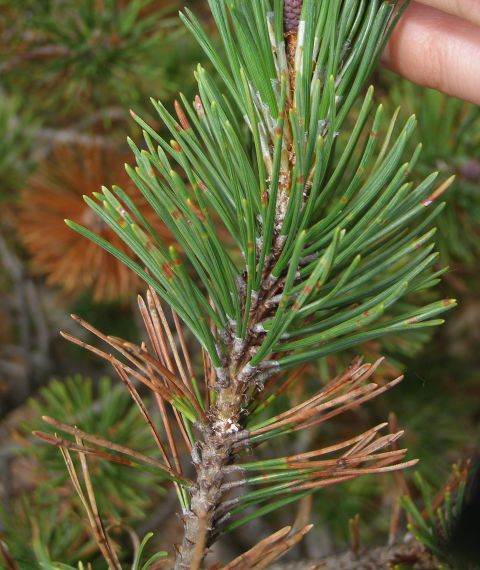People are noticing a browning of needles in their pine trees. If these needles are behind last season’s growth, do not panic, it is natural needle cast.
If the browning is affecting last year’s growth and we can rule out winterkill, there are several disease issues caused by fungi.
The first one is brown spot blight. This disease usually starts turning the needles brown throughout the year. Look closely and you will see small, brown, resin-soaked spots on the needles. The needle tip will turn brown and dies. A fungicide can protect unaffected needles containing copper or chlorothalonil when applied when the needles are half grown and again 3 to 4 weeks later.

The second cause could be Dothistroma needle blight. Reddish-brown spots or bands occur on the needle. The band will eventually girdle the needle causing it to die from the band to the tip. Young needles are resistant until later in the summer. Again, use a fungicide just before the buds break and again after the new needles have grown to their full length.

The third cause is needle cast (Rhizosphaera) where the new needles are green, and the older needles are brown to purple. Look along the needle and you will see black bumps. The disease starts at the lower part of the tree and works its way up the tree. Needle cast affects spruces like Colorado, white, and Norway. Make a fungicide application when the new needles have grown to half of their length, a second 3 to 4 weeks later. Do not use chlorothalonil, as it is listed as a phytotoxin to spruce trees.

